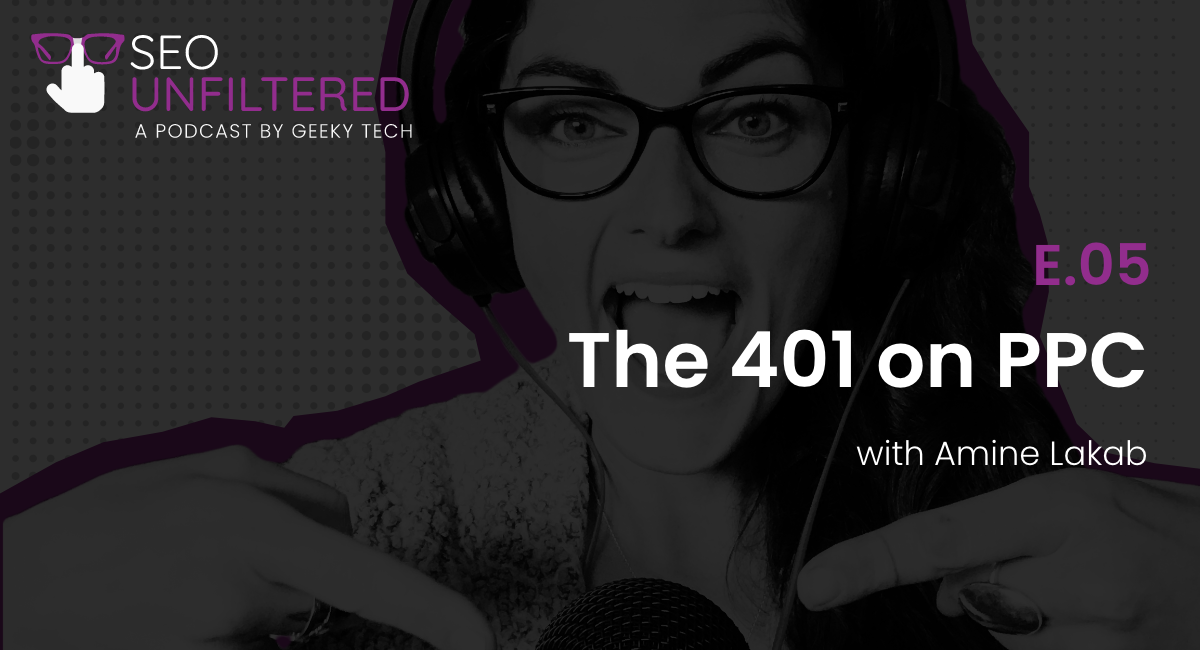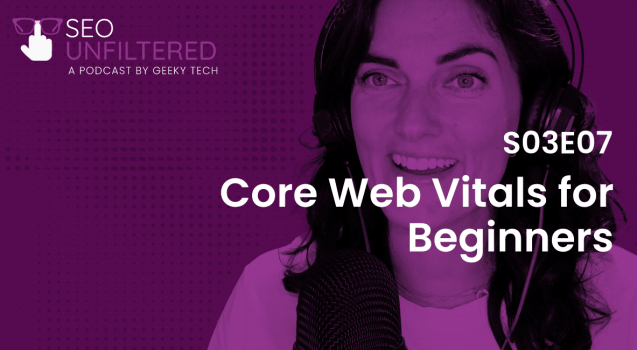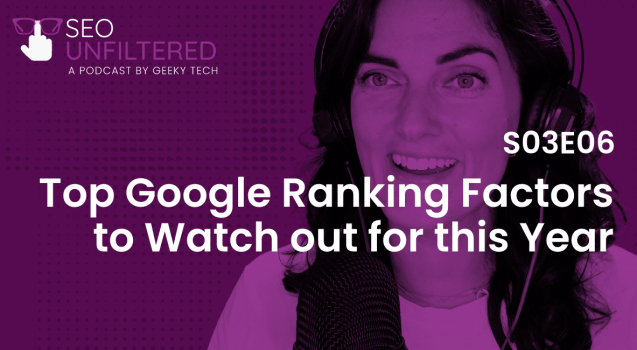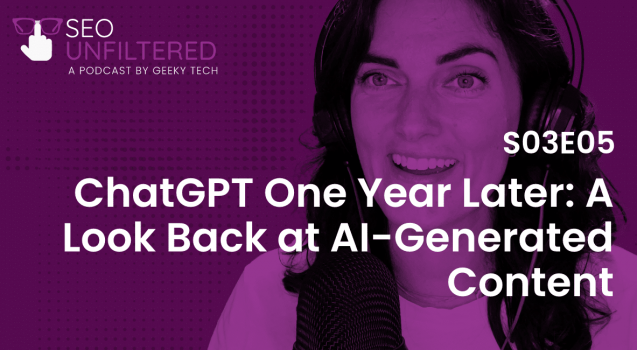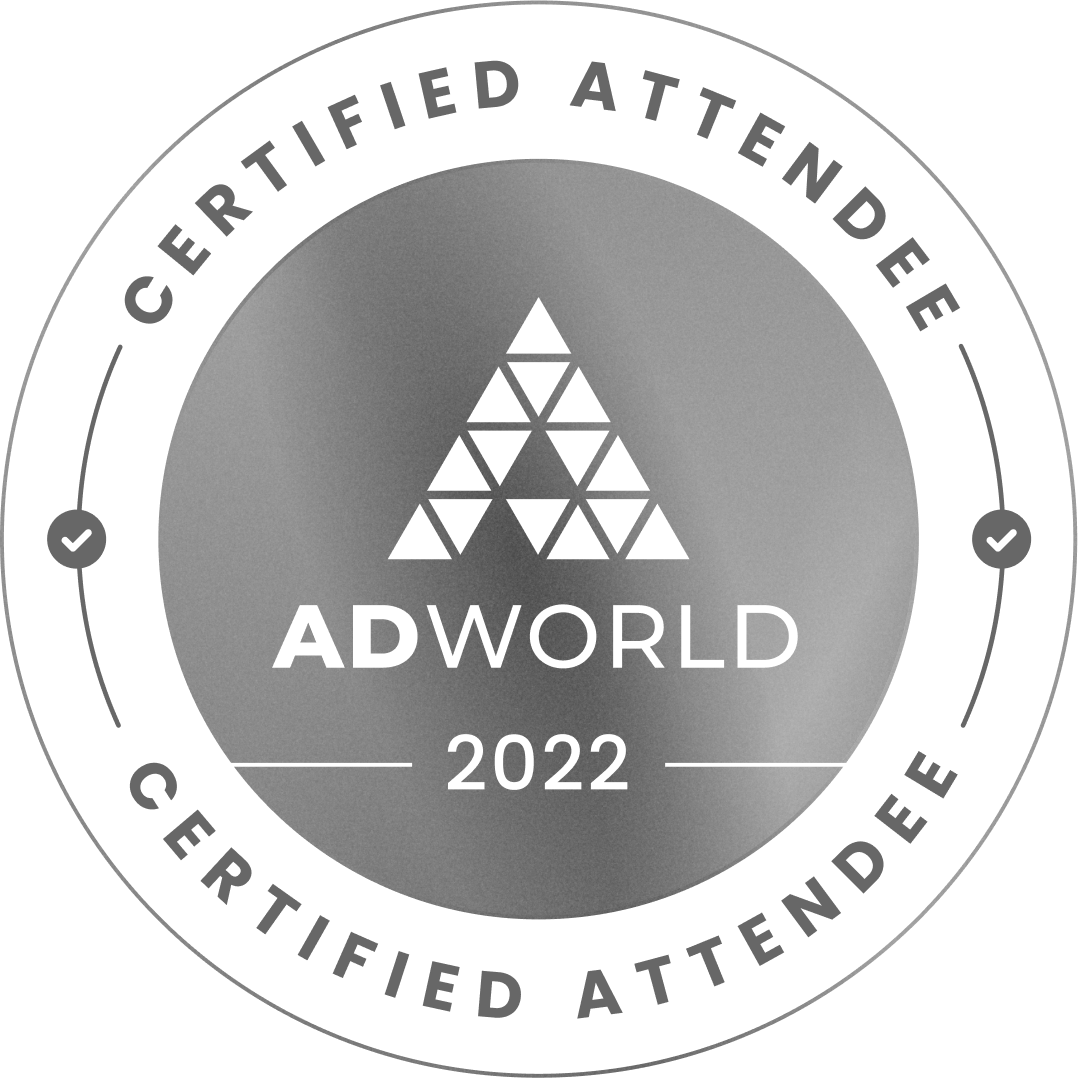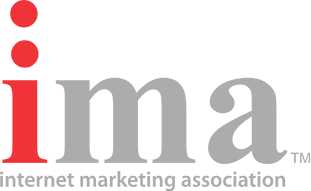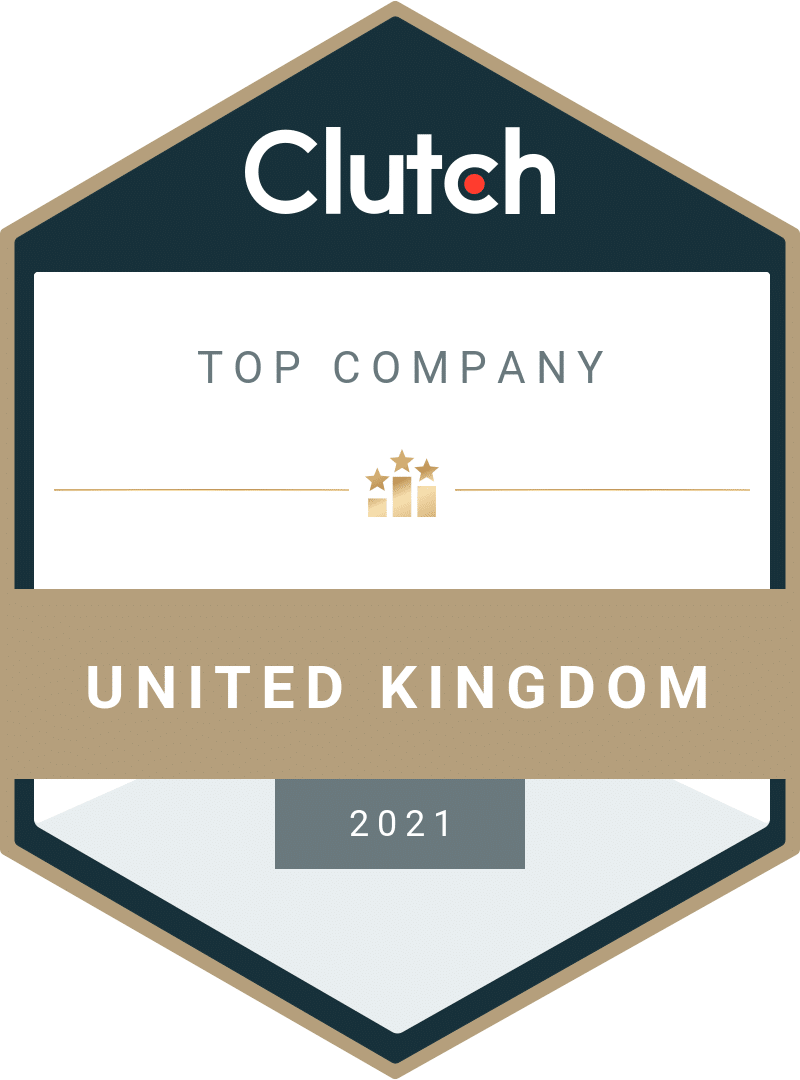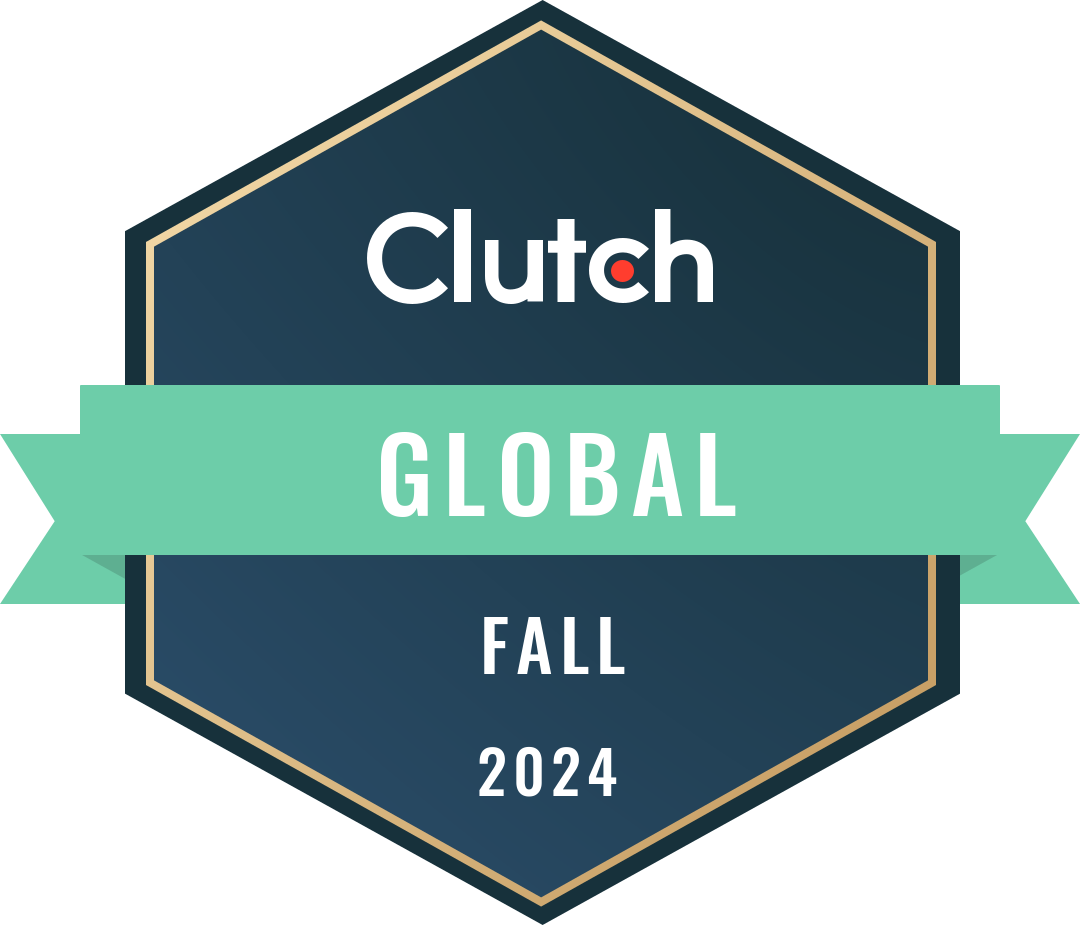Transcript
We talked about keyword strategy on page optimization, backlink building and competitor a. But now I want to talk about the other half of digital marketing. The half that’s almost guaranteed to dramatically increase your rankings in just a short period of time, but which sometimes comes at a fairly high price.
I’m talking about advertising. Of course. It’s the difference between waiting in line to get on the roller coaster or paying a little extra for a fast pass that bumps you to the front of the line in front of everyone else. Today, I’m joined by my friend Amin, an advertising specialist who has a long history of working on campaigns of various sizes from shoestring budgets to six figure multinational ads he’s seen and done it all.
And he has taught me that digital advertising is less mad men and more mathematician. I’ve asked Amin onto the show today to discuss strategy. Any company with a budget can throw together an ad and slap it on the internet. But what does it take to make your ad work for you? How do we maximize our marketing ROI while simultaneously using our metrics to strengthen SEO?
In other words, how do we have our cake and eat it too on that note? Thanks for joining me today. I mean, how are you?
[00:01:31] Amine: Hi, Genny. Doing good. How are you? [00:01:34] Genny: Good. Thanks. Okay. So let’s start by defining PPC because based on previous conversations we’ve had, the term has been used to mean like quite a lot of things.So can you gimme the real definition and then the definition of PPC that everyone in the marketing world uses?
[00:01:48] Amine: Yeah. I guess PPC as an acronym has only like one main definition is just when it is used or what it is usually used in the. In the industry or, um, to refer, um, in terms of what are you referring to basically?So SEO we know is mainly getting traffic from organic search, uh, PPC. When we speak about PPC as a traffic source, most of the time, we mean getting traffic from paid search. Um, okay. Even though the dictionary definition of PPC is paper per, per click, generally speaking, SEO, organic search, um, PPC getting traffic from paid search and S E M is, uh, yeah, a combination of the two it’s when we do general search engine marketing.
Means getting traffic from both organic and, uh, paid search. Most of the marketing managers that I worked with referred to PPC as simple paid search. Um, so it’s only that one, that one channel. Okay.
[00:02:55] Genny: Yeah. Okay. Okay. So if we’re just talking about PPC as. Paid search should companies of all sizes, uh, consider using it as part of their marketing strategy?I guess the real question is, is it possible to see results of paying for search ads, even if you don’t have that big of a budget? The answer
[00:03:14] Amine: is yes and no. If you are smart about it and if the industry that you are working in, doesn’t have that much competition. Okay. You might get away with doing some search ads, uh, without, without a big, true, true big of a budget.Most of the time there is always before, um, before we’re running any ads, there is always a stage where kind of an audit is done. Okay. Yeah. And part of that, Part of that step is to see if PPC is worth doing for the budget that the advertiser, um, has available or not, which means in paid search, not all keywords are equal and keyword is the main targeting option that we have when we work with paid search.
Doesn’t matter if it’s Google or bank or any other search engine advertisement platform in general to generate any. Generally speaking, you need to bring as much as you can in terms of traffic and users to your website in order to convert those. And in order to bring as much as you can. Cause, uh, not all of those will transform from visitor to subscriber or from visitor to client.
You need to have a lot of a budget to account for the that’s unique. Click like how much it will cost you. So, okay. If the main keyword that your potential customers would be searching for costs on average $10 a click and your daily budget is $5 a click. The chances of you getting any traffic at all in some days are really, really low and just generating any.
Any revenue from that traffic, basically it will not translate to any meaningful results. One once those, that small sample, um, of users lands on your website. So, yeah, it depends basically if I, if I, uh, want to summarize it in one word, it really depends. It’s per it’s. It depends on the which industry, which brand and what exactly are you?
[00:05:28] Genny: Is it different with B2B and B2C? [00:05:31] Amine: There is a small difference when it comes to costs. Yes. In B2B, there are generally more, more competition when it comes to paid search. Okay. Uh, because businesses do. Do understand the potential and do understand of the importance of being there, being visible and making sure that you are on the top of that search, um, search visual page.And this goes, this is, this goes for a CEO as well, but even more for PPC because PPC is. Kind of not short term necessarily, but depends on the strategy, but the results, you can see them really quick getting your, um, ad or your message on the top of the search engine page is. Definitely something that all businesses are doing.
So it can be a little bit more challenging for B2B to really make sure that they are getting the most out of their, um, ad spent compared to mm-hmm B2C, but yeah, it’s again, it’s really, it really depends on the brand and what they’re selling and what industry.
[00:06:40] Genny: Okay, this is kind of a dumb question, but I’m kind of, I’m just curious.What’s the smallest amount of money you can spend a day on an advertising campaign,
[00:06:49] Amine: um, from an ad platform perspective. If you’re, if you’re going to use like a platforms like Google ads or even paid social, or, um, some other platforms, some of them can let you set up a daily budget of as low as $1 per.Okay, but it doesn’t necessarily mean that that’s the budget you want to use, especially like what we said in the case of PPC. If your average cost per click for the keywords that you’re targeting is way more than that. Yeah, it’s
[00:07:23] Genny: not worth it. Yeah. [00:07:25] Amine: Um, basically I would say the best budget or the lowest budget you can go with is the one that would cover your, your bottom of the funnel, um, traffic or the, the one that will let you get some of that.Some of those potential customers without doing any general. Demand generation, um, like, but you basically rely on rely on nature. Those users doing their own research, comparing, uh, comparing and benchmarking, uh, similar products or similar services. And then you are trying to just show your ad at that last step before they decide, okay.
It’s time for me to get this product and show their a, uh, your ad in the hopes of them. Considering your offer, uh, bit by then, most of the time it’s too late, uh, especially in B2B. Okay. If that works, I guess that that whatever budget is in, not for you to generate meaningful results, um, from this type of, um, of setup, that would be the lowest, the lowest budget you need to invest.
[00:08:36] Genny: Okay. That’s really good advice. So it’s not really an amount. It’s more like how much you can pay to at least, uh, reach those people at the bottom of the funnel. Yeah. [00:08:46] Amine: Oh, [00:08:47] Genny: awesome. Okay. So in the last episode I was talking to mark about keyword strategy and one of the main things we discussed was leveraging your competitor’s successes to your advantage.So does the same apply to paid search? Like, should you be researching your competitors before creating your
[00:09:03] Amine: ads? Um, yeah, that’s that’s that it should be part of the, not, not necessarily only the keyword research, but generally speaking from a planning level or at the media planning level, where are your competitors also running ads?So not only. At the keyword level, but generally speaking. Okay. Are they doing paid social? If so, why? This, this in my opinion is a necessary step. Uh, okay. Simply because you know, most of the ad platforms are auction based auction based. That means that one of the primary factors of defining who will be the auction winner and, um, what will be the cost of that click or the cost of those 1000 impressions.
Is competition and is how, how many advertisers are bid on that placement or are bid on that keyword or are bid on that target audience? When we speak about paid social, for example. So. Taking into account what your competitors are doing can help you detect, for example, those gaps that either no one is Tapp into, or also help you define if your budget is in, not through executor strategy, basically.
Okay. Yeah. Researching your competitors when it comes to the keyword strategy and in general is yeah. Is a must. Okay. When developing any paid advertising campaign.
[00:10:37] Genny: Okay. And just outta curiosity, do you help, uh, our customers do that or do they already have the keywords with them? [00:10:45] Amine: We, we kind of do it, not, not only during the development of the strategy stage, but also mm-hmm while we are, you know, during the relationship and the partnership with the client, it’s part of we call BI or business intelligence.We’re always monitoring, especially if, uh, for B2B, for B2B, sometimes the competition. Can be so aggressive or aggressive that even the slightest change in your competitor’s offering will shift all of the market. Uh oh, wow. Yeah. So depends on the situation. Uh, we do it less, more frequently than the standard, like frequency, but there is always included on our offering.
Um, the monitoring of what, what the competitors are, are doing, not only in the search engines, but also elsewhere.
[00:11:40] Genny: Okay. Yeah. Interesting. So let’s just say a customer comes up to you and they’re like, Hey, I’m in. I want to sell more products. I’ve got this amazing software, but my sales are stagnating and I wanna create ads to draw on more customers.What’s the first thing you do. Yeah.
[00:11:56] Amine: So, um, there is definitely a process that we follow the first steps, involve the client, trying to explain to us first what they do and why their software is amazing and how it helps their clients. Um, okay. Part of that process as well is to understand at the moment. Uh, where are they getting their sales from?And, okay. Um, in this specific example, you mentioned stagnating. We try to understand why is it, is it because like they maxed out all of those potential customers on the other channels or no, and if not, We need to know that because maybe paid advertising can not necessarily generate revenues, um, on its own, but also help the other channels increase their revenue as well.
So, okay. Um, there is that the first step is this is understand the current challenges. Softwares USPS, the competition and yeah. Analyze this, the success and the failures that they have, um, that they had in the past with paid ads. If they run any, most of the clients would have already tested maybe in house.
Okay. Or sometimes it’s the marketing manager who, uh, Who is running the ads themselves mm-hmm and, uh, trying some, um, some ads platforms by themselves as well. So all of that historical data sometimes is very, very useful. Like I said, in understanding why, if it worked okay, why? And if it didn’t work, why, so we can either expand on, on that success, um, and scale it.
While, obviously throwing a wider or a broader analysis in check or checking or, uh, researching other areas that we can tap into as well or understanding if it didn’t work. Is it because of strategy and execution? Then the second step is we move to the strategy development. so during the strategy development phase, we try to get from the client, their objectives when it comes to this, if it’s only sales that that’s, that’s one objective.
If it’s boosting the brand awareness, or if it’s a new software increasing or driving discovery of that software. Um, we’ll include that as an objective as well. And then based on that, we’ll go ahead and develop the strategy. What would be our recommendation when it comes to paid advertising in general?
Yeah, so we get the budget as well, uh, or an idea of the budget and what would be a measurable in terms of, uh, KPIs or metrics. Mm-hmm what are those measurable KPIs? Uh, that we could use to say, okay, um, after let’s say the first three months or six months, or next quarter, we decide if what we are doing is successful or not.
[00:15:01] Genny: Okay. Wow. That sounds a lot like the SEO side as well. Just outta curiosity. Have you ever turned down a customer because their website is just not good. To advertise. [00:15:15] Amine: I haven’t seen an, an example where like where the website was. Yeah. that bad. Uh, when it comes to PPC, it’s sometimes it’s a little bit easier because nothing, nothing holds us from developing a PPC dedicated landing page.To use or redirect, um, the paid ads traffic to, to it, which will during its its production, we will make sure it’s like really relevant to the intent behind the keyword. So there is basically no communication discrepancy and the offer is exactly what we are promoting. Yeah. So I think it’s less of a problem when it comes to PPC, but it doesn’t necessarily solve the issue because we don’t control the users, uh, the user’s behavior once they land on the landing page.
Yeah. Again, not involve the user from going back to the homepage, doing more research on who you are, what you do. And usually the first, uh, the first major source of that, of that research information or, um, of those informations are your website. So if it’s bad, it might, it might impact the brand image and, um, the authority.
And they will not end up considering that brand when it comes to buying the service of the product.
[00:16:39] Genny: So if we’re just going back to the last example, assuming the PPC ads are created and the audience is selected and the campaign is ready to launch. How long can you reasonably expect to see results if you’ve done everything correctly? [00:16:54] Amine: Yeah. So after that strategy development, where we go and, um, and do our own research, when it comes to translating the business, um, the business target into, uh, or the marketing target, the target persona into basically, um, a model that would work with. Our available tools, uh, in, in paid advertising. Mm-hmm , we, we, we come up with that recommendation and we come up with what we call the media plan.The media plan is the combination of, uh, depending on the objectives, uh, of all of the, uh, channels, add formats, uh, targeting tactics that we recommend using. And, uh, in the case of paid search keyword that we recommend to, um, start the campaign with, obviously all of those, um, are not like stagnant. Once the campaign launches a campaign is what I like.
I always say it’s a live thing. Um, it does need care. It does need monitoring. It does need maintenance and it does need, uh, optimization. So the targeting that you are starting with, it’s not necessarily the one that you, you will, you’ll still have when the campaign is generating results. Yeah. So there is a learning phase.
There is an optimization phase. We just trying from that initial research and strategy development and media planning to make that, that path a little bit shorter. Mm-hmm um, I guess, yeah. Okay.
[00:18:36] Genny: Okay. So it’s not like a one and done thing. It’s constantly evolving. [00:18:40] Amine: About how long it can reasonably take to see results.Um, again, the word that maybe most of the marketing measures, don’t like, it’s, it really depends. Um, yeah, it depends because like I said, there are. Tons of factors, uh, to take into account. And one of the most influential ones is the actual proposition itself, which will translate into the actual key messaging or the message of the ad mm-hmm because we need to remember all of these page channels are just here to amplify and give the, give the voice to that message and speak it out.
It’s just. The only difference is that if we compare it to mass media, is that we are trying to make sure that only the users who are, um, most likely to convert, which are within the target persona, hear that message. 60% of the effort is the proposition on that message. Mm-hmm and the message itself.
[00:19:46] Genny: Yeah.So there’s a lot of weight on the copy.
[00:19:49] Amine: Yeah. Copy content. The actual, um, offer itself. Um, like I said, yeah, some, some advertisers go, if I take the previous example you ask me about, which is software, some advertisers would, for example, go as far as developing. Like with actual development time and resources, a fian version of their software.Um, okay. Just to make sure to get, to get that, you know, as a, that entry point and their, um, foot in the door. Um, so they can sell afterwards. So, yeah, it depends on the ideally when your messaging is good, uh, when your website or landing page has all of the information to convince and answer all of the user’s objections.
And, um, when the user is qualified and is within our target persona in paid ads, you can start seeing results, right? Like in the hour sometimes. Oh, wow. Yeah. With some advertisers. Okay. Um, that do B2C, for example, I’ve seen, I’ve seen examples where, um, in the telco, in the telco industry, for example, Where, um, a limited time offer or, um, a new flagship phone launch.
We have seen like results instantly, like in the hour of those ads, starting to deliver impressions and clicks in other examples where the, where the sales cycle may be a little bit long and the customer journey like really takes, you know, the rule of seven or. I guess now even more, um, dependent on the industry, an unknown user would need between seven or 12 touches with your brand or, um, okay.
With you as an advertiser before transforming to a lead or to a, to a customer. Oh, really? Yeah. That seems long. And it’s, it’s a long journey and it doesn’t only happen in one channel. Ah, okay. Yeah. So. It’s really hard to answer that question, but like I said, if ideally, if everything, um, is made to perfection mm-hmm , um, and the campaign is taken care of and optimized correctly, or, or as it should be, it should start seeing results.
Um, the longest, the longest I have seen in some really, really niche B2B advertisers, I guess it’s two to three months. Those are really niche. Their potential clients in the whole world are probably less than 200.
[00:22:36] Genny: Okay, so let’s go back to advertising in general. So not just PPC or not just paid search as you’re well aware, marketing teams spend a lot of time, money and effort on creating irresistible ads to push awareness in sales, but what can they do to maximize their ad spend or basically guarantee some results? [00:22:57] Amine: The short version of my answer would be to not give up too early, um, especially in the B2B industry. Um, most of the, most of the marketing managers that we have worked with in the past, um, kind of expect the results, especially from, uh, paid advertising to be like linear. Um, okay. Like, yeah, you run a PPC ad, you get leads.Um, you promote, um, a new webinar that. Bring some like experts or, um, an expert panel from the industry expect to get leads. Um, yeah, the truth is it’s not necessarily that linear with paid advertising. Hmm. It does take if effort before and during as well, like I said before. So even when you create your resistible ads, um, and you push them.
You can’t be sure that those ads are irresistible before seeing the actual data. Um, okay. Each customer is different. Each user is different. Each, each geo market is different. Um, so there is definitely that, like I said, that work that needs to be done after the campaign launched to make sure that, um, the budget is spent.
Where it is not necessarily only generating the conversions, but assisting in generating those conversions long term. If your campaign is already running and it’s already generating results and good results based on the, um, on the target KPIs. That you defined as, okay. Once we start to see this cost per conversion or cost per subscription or cost per per purchase, we can say that this campaign is a success.
How can we maximize beyond that, that work? Okay. That needs to be done from that step onwards is still, uh, can still involve all of the variables that made that campaign successful. Even if you are landing page. Has like a really good conversion rate, not involves you from creating a second version to try to push that conversion rate even further and improve it even more.
Uh, even if your current ads are working correctly, at some point during that, that campaign, depending on the, like I said, industry, the size of the audience, et cetera. Uh, the, the target audience you should, from the, from the frequency metrics or even the clickthrough rate, you should start noticing or, or, um, feeling the, a fatigue phenomenon.
What’s that? So, Ad fatigue, um, or there is a phenomenon called basically ad blindness okay. Um, yeah, it’s when you are used to see so much of a brand’s ads with the, I mean the same ads. Okay. Same message messaging, same key visual, same colors, same creative. Um, that at some point when you are browsing throughout the web, even when the ad is there.
You become blind to it kind of. Oh, and you just skip it, like at some point you have seen it so much that you, um, that you start not noticing it anymore, where while you’re reading your news articles, for example, oh. Even some advertisers do do a mistake by, for example, changing just the headline. But at that stage, It’s probably too late because no one would read that ad.
So how long is too long? It really, it really depends. Your PPC manager should be able to, um, to tell you based on, on, on all of the pre click metrics. Uh, at some point, like I said, you’ll start noticing a drop in the clickthrough rate and yeah, your frequency would, will be so high. Like, um, it would tell you, for example, if you’re not applying a frequency cap, it would tell you, okay, if you’re targeting these 10,000 users, each user has seen your ad at least.
I don’t know, nine times, nine times or 12 times in the past week. at some, at some point when you see like such a high frequency and your clickthrough rate start decreasing, that’s one of the signs that add fatigue is now a thing. And you maybe need to refresh or think of a new creative way to, uh, change those ads that once were irresistible.
Okay. So yeah, all of the elements that made that campaign successful need to be optimized even further, not to only to maximize the ad spend, but also to keep, to keep that success for as much as, as you can. And that’s basically optimizing your return on or ad spent Oris from a management perspective, your PPC manager should be able to help you during that learning.
But also in the future mm-hmm with either with general insights either when it comes to, okay, we are targeting the us, certain states seem to engage with our ads and our offer better than others. Okay. So they could be optimizations when it comes to the budget allocations per state, per device, per multiple dimensions, really.
But they, they should always be. An area where you could make sure that no. No dollar is going to waste and we direct it towards the areas that, uh, where you are seeing the success. And that’s, that’s ultimately how you’d make sure you have, like, you reach your maximum return on ad spent on that specific company.
Oh,
[00:28:52] Genny: wow. Such a thorough answer, even though you started off with saying to give you the short answer [00:28:58] Amine: yeah. Short answer is not to give up too early and this is why basically. Yeah. You don’t, you can’t, if you give up too early, you have missed so many ways of optimizing your campaign. Yeah. And some campaigns start slow, starts low.Yeah. And, uh, it’s not necessarily because, um, of a poor choice of channels, sometimes it’s poor choice of channel, but. Sometimes when you, for example, when you are a new brand or a company comes up with this new idea of a software that’s revolutionary mm-hmm , um, that no one had before, it’s a completely new market.
Okay. So there is always that learning phase, um, right. In some instances, your comp, you will need to like experiment with messaging and, uh, marketing tactics until you find one from a paid ads perspective. That gives you a positive sign and then try to understand why and expand on that. Sometimes we have seen, we have seen instances where the results of the paid ads are, are feeding the marketing with insights that in some cases have gone as far as even making changes to the offer itself.
Okay. Yeah. ACA said. Everything is interconnected and yeah, one simple change that you make at any level of that, of that chain may either help you maximize the results on your ad spend or not.
[00:30:36] Genny: Okay. So if we are just talking about advertising in general, in well, digital advertising, what do you, what would you say is the most effective B2B advertising channel that you’ve seen? Or does, does it depend [00:30:53] Amine: I mean, it doesn’t depend, um, it’s in this specific instance, the best channel is the channel that works for you and from, from, from which you are getting the results at the, at the cost per acquisition that are acceptable.And with which you are making profit for some industries, they find more success in paid social in general for some. Other industries, the only success they would have found is for example, on LinkedIn or in search only. It doesn’t mean that you shouldn’t be doing all of the other channels, a good general, uh, paid media strategy is one mm-hmm that takes into account the global participation of all of those channels.
This is the bane of every marketing manager. Um, attribution, basically. Yeah. Like I said, that’s one mistake that I think, um, That I think most of the marketing teams make is. They without a proper, like, uh, a proper attribution platform and moving forward, I think, especially because of the, like with the cookies going away eventually mm-hmm, some platforms that seem that they are not generating the results.
Will be based on that one KPI that everyone swears by in some, in, in some examples, these leads, for example, you could say, okay, Facebook is definitely not generating leads for me. Um, so I should probably cut my budget there or even remove it from my media plan and focus that budget on the search. Um, Yeah, like I said, the most effective advertis channel is in my opinion, that combination of channels that work all together as part of the same mechanism, some of them are more, uh, are used more when we are doing dimension.
Some of them are used more when we’re doing demand, capturing like search, for example, or display re targeting. You will always, or in most cases in B2B, see the leads or the final conversion happening on those demand capturing channels, because that’s what they are, their, their demand capturing. It’s the end of the journey.
But the, yeah, the customer journey started like way long before that. And if you are using the other channels, right, you were part of that journey from the start you were part when that user decided, okay, this is a problem that we have internally. Is there something, some tool or software that could fix this for us?
You were part of the journey when they were, for example, researching those kind of soft softwares, how they work, uh, do they integrate. Other third party software that they have, for example. Yeah. They have seen your message, for example, that pushes, okay, we integrate with this, this and this, which would definitely make an impact.
You were part of the benchmarking when they were considering multiple providers and you were part of that list. And at the end, when they finally decided, okay, this is exactly what I need when they were looking for an offer for that tool, they saw your last ad on search because they researched one keyword and ended up converting.
If you’re looking at, for example, Google analytics alone, you would see that. That conversion will be attributed to that last step, whereas way before maybe a journey that started three months before those users have been exposed to your exposed to your messaging in Facebook, in LinkedIn, um, display banners on organic, you know, it’s not necessarily only, um, paid channels.
So without the proper measurement or, um, A good measurement of all of those touch points. Mm-hmm it is hard to have like the perfect setup in terms of, uh, channels or which, in my opinion, like I said, it’s a multi across platform channel presence for your brand. Okay. And you would just say okays is the only one working for me.
I’ll stop doing everything else, exploring all of the other options. And yeah, that’s one blocker into maximizing your ad spent and, um, okay. Yeah, there have been instances in the past where some big brands decided, okay, I’m ditching Facebook. It’s not working for me. Yes. It did influence the revenue. Um, it’s noticed at the sales stage, not necessarily before, but yeah, like I said, It’s it’s really, it really depends.
It really depends on your current setup, if you’re able to measure those effects or not. And sometimes when some clients are coming to us saying, okay, we are not able to maximize, um, our paid search results. Sometimes it’s just because. Of that, because they’re not making any, any actions or any communications at the other stages of the, of the funnel, if we want to, uh, refer to the funnel again, because they’re, they’re already maxed out at the bottom of the funnel, they’re already doing retargeting.
All of the users who visited their websites without converting. They’re already getting as much as they can from that, from that segment of the audience. Um, all of the ones that are researching their specific brand and their primary keyword, and considering like, there are some, some products that you don’t care about the brand.
Sometimes you just, you know, you’re such in a, in a hurry and it’s not, it’s not like a, it’s not like a big pricing product. You’re just looking for. A pen, any pen would do. Um, yeah. So you are relying on such things and thinking that, okay, this is as far as I could go in paid search, but you could go much farther than that.
If you have done more work on the stages of the funnel that are before that. Yeah. Um, okay. Yeah.
[00:37:30] Genny: Wow, that sounds really intricate, but I see what you’re saying about how it it’s all working together and it’s all interconnected. Um, okay. I have a question and this is more of a personal thing. How come Facebook is still or how is it possible that Facebook ads are still effective?Because isn’t Facebook kind of dead.
[00:37:49] Amine: again, still effective. oh, how I thought. Effective in what sense for which, in which industry? For which client? Um, it’s a little bit hard to define. [00:38:03] Genny: Hmm. I guess if you were, for example, B2C and you’re targeting, um, 18 year olds, maybe Facebook, isn’t the place to go, cuz it doesn’t seem like the younger generation really is latched onto Facebook as much as we have.Is that fair to say or is that too general?
[00:38:21] Amine: Yeah, so I think, I think in Facebook’s case, um, and for B2B marketing goes per your question, it shouldn’t be ignored. They still have a good user base. Very good user base. Yeah. In B2B, like you, you just need to see where it would fit in, in your media plan and where you’d get the most out of it without, without wasting, wasting budget.Most B2B advertisers that, uh, that we are working with are using Facebook ads for, uh, mainly for retargeting. Um, yeah, for some of them we stopped using Facebook ads, like a little bit early, not a little bit too, not early in terms of the, we stopped trying early, but, um, like as soon as we started noticing the conversions going down, when we were doing mainly the conversion or the Legion, uh, objective on Facebook, now we are keeping it just for, you know, just as a presence in, in another paid social platform.
And as another touchpoint, like I said before, your target users spend their digital day in so many platforms and they visit so many publishers, they use so, so many apps and it’s impossible. It’s impossible to save or to be sure like 100%. Okay. My target persona doesn’t visit Facebook have. Everyone visits Facebook.
So again, to maximize the returns on your ad spend the most effective way is to use that channel based on its. Specificities . Yeah. And try to, to use it in a smart way. So for B2B, like I said, we’re using it just as most of the time, just as a, another retargeting touchpoint to make sure. Okay. If, if my, if one of the target users, if that one user that I’m interested about doesn’t visit doesn’t during that specific day, doesn’t read any.
Doesn’t use any app. Doesn’t go back to my web website. They only, yeah, like they’re so busy. They only have like five, five minutes before picking up their, their kids from school and they checked Facebook. I want to be there. In that small five minutes window. So we are adding it in the media plan just to make sure that the, like the lowest hanging in fruits, the users that are more, yeah, the most likely to convert, uh, in the sh in the short term to get that chance to speak with them again and bring them back, or at least stay top of mind, uh, until they make that, that decision.
[00:41:05] Genny: Okay. Yeah, that makes sense. I guess this all brings up the same thing that my other guests have been saying over and over again, which is that it’s so important to understand your customer and how they search the internet and how they spend, like you said, their digital time, but I guess advertising is different because you aren’t just hitting them on search all the time.You’re following them wherever they go. If you. Signed up for programmatic,
[00:41:30] Amine: right? Jerry is speaking, uh, wherever you’re in for any channel, it’s still important to understand who your customer is. Um, if, if you’re an old service provider or product, uh, product seller producer, you’d already have like that defined ideal target persona based on all of your current and past customers.But you’re trying to find common signals, for example, when it comes to their behavior on your website, um, or you’re trying to find, just to define, um, who they are or what they have in common, uh, other than need in your, your product, uh, basically what makes them special and what made them choose you? That, that knowledge it’s absolutely, um, necessary.
Doesn’t matter what, which channel you’re trying to leverage to, um, to help with your general marketing. Okay. In, in paid advertising, it’s even more important because it will definitely help you allocate your budget and use it more efficiently. For the simple reason that compared to mass media, you have more control and you can be so granular in some ad platforms, um, with your targeting, um, Yeah.
If you, if you do flyers or do radio or do TV, for example, I mean, now you can run TV ads for grammatically, but before you’re basically, yeah. You’re basically showing your ads in to, to the masses. Hoping that those, that 2% that you’re interested in sees your ad or gets your message. Mm, in paid advertising in digital paid advertising, you don’t have to do that.
Most of the ad platforms have not only demographic data, but also intent data. And they collect so many signals that would require you to spend your budget. If you are targeting, right. Um, and if you’re using the right targeting tactics, that will help you spend your budget in the most efficient way, uh, possible programmatic.
Um, if we are referring to display, programmatic is one of those, uh, is one of those channels that definitely uses the customer or the target persona information to translate into where or in which publishers or, um, in which. Bid requests. We are going to bid. Okay. Based on those, um, if we speak about programmatic display, we can target using demographics.
So gender, age groups, uh, income level, even in some countries mm-hmm um, if you are a parent or not, right, you can target using contextual targeting tactics. Um, so if, you know, for example, that. Most of your customers before they made that, uh, before they made that purchase decision, they started to look up reviews for similar products in like industry specialized publishers or websites.
Okay. If that’s the case, then you can definitely use that information and translate it into a contextual, either keywords or contextual targeting in general, where you go for example, and try to build only on ad slots, impression opportunities that are on websites that contextually speak about that keyword or in which the article speaks about that keyword, for example, or those search terms.
Can also target based on connection. Speed can do my God. Yeah, you can do customer match. It’s also one thing what’s that? So, so some, some, some ad platforms, uh, will let you
upload a list of contacts or users basically just. First name, last name, emails, and telephone numbers. Okay. You absolutely need to check with legal before doing, before doing that. So it’s not just a, like
yeah. Exporting from your current CRM and uploading it. Uh, there are rules that, um, apply when it comes to that specific action. But if your customers, for example, have agreed in your thoughts about one article that says, okay, you are going to use, uh, their contact information for marketing purposes. uh, and depending on, in which region you are, you are allowed to use your current customer base database or list upload it, give it to the DSP or the demand side platform.
And what they would do is first of all, they would anonymize it. Okay. It’s all of the personal identifiers, as soon as they are able to match that user with internal user to that data provider or platform. Yes. So once, once they do that, you uploaded your, uh, your list and the platform did the customer match step.
It would tell you, okay, from this 10,000, for example, contacts I’ve been able to match, um, 5,000 of it, which would make the match rate 50% matching them means that the platform or the data provider. Has data or data about those users. So they might know who they are. They might know their. Previous behavior on search engines, or generally speaking that, that digital journey.
Yeah. Or what, which publishers, they are more likely to, um, they, they were visiting in, in the past and they will build what we look based on modeling. They will build what we call lookalike audience or similar audience. Okay. To all of those users that you have provided in the past. And that new, similar audience is completely different users.
It’s not. The ones that are on the database that you provided before, but they are pretty similar inter from a, from a persona description. Yeah. Perspective. So if you target those audiences, those generated audiences, or you do prospects into those, you are more likely to generate. Conversions.
[00:48:01] Genny: Okay. But how can, how can advertisers access all this consumer data in order to like fine tune their, their outreach or their campaign? [00:48:12] Amine: The example that I just mentioned, um, the customer match targeting tactic. You can’t necessarily access who ex or see who exactly is on those, um, audiences. Okay. You can, you can reach them, um, using display advertising or. Uh, audio or even TV. Um, like I said before, crazy, but you can’t know, like, this is Mr.John DOE for example, and this is his email. You never have access to that information, uh, at all. Okay.
[00:48:46] Genny: If you’re doing an ad for like brand awareness or whatever, how, where is the data coming from? Like how do you target your audience? Does it, is it just the platform that does it for you? [00:48:57] Amine: It’s the platform with data management or data?Data warehouse. Propers. Okay. Um, but yeah, most of the time the platform handles that for you. Okay. If I take the example of Google, uh, Google’s DSP is called display in video 360 mm-hmm . So Google is not only a DSP, but also has an add exchange and has. An SSP, which is a supply mm-hmm supply, uh, supply platform.
Yeah. That the publishers use. So they basically have a product across all of the, all of the, all of the chain. Yeah. They have a platform that the advertisers use to buy. At placements and they also have the platforms that publishers use to sell that placements. And they have an ad exchange, which is the platform in the middle that sits and handles.
It’s basically the marketplace manager handles all of the transactions. Be. Between that demand and offer. And they are themselves an advertising platform and the publisher, because they have so many websites, so many tools, um, they have too much power. Yeah, they have, they have data. So if you’re using. At DSP as an advertiser, like DV 360 or displaying videos, 360, you basically have access to all of the data that you can imagine from a targeting perspective.
It’s not everything, but if you’re just starting out, it’s way more than. Then you should need if you’re starting out in programmatic. Mm. Um, so when you are using contextual, you’re basically using a combination of data, data that the publisher, uh, declares. So I’m the New York times when I’m in the process of integrating my offer into Google’s ad exchange.
I have to declare who I am, who I. What my website is about. What’s the nature of the content that I publish. Um, how brand safe it is, is it, it is rated only for adults. It is, what’s the rating, um, from a contextual perspective as well. Um, like each article or each category of the website would declare.
Okay. Um, I’m speaking about sports. So the users who are more likely to read the news articles that are in here are, um, sports fans, et cetera. All of this data is shared by the publishers. Okay. But from a user perspective, since Google in this specific example has so many products and is everywhere basically.
They know, what, what are the signals? They collect signals about the user and it’s the combination of all of this data. The one provided by the publishers, the one provided by Google that is offered to you, the advertiser as a targeting option or method in the ad. You have to pay extra for displaying video 360, if your agency, um, I mean you can get it.
Um, there are minimums, uh, minimum investments, monthly investments. Oh, okay. So it can be a little bit hard when you are working with the limited budget. If you are working with, uh, an agency, that’s a partner you should be able to, to spend on it or have access to it for a little bit cheaper. Are we a partner?
We are, um, we do, we do have, uh, access to David three XG and yeah, we can handle the creation of ad accounts for advertisers. Of course. Hmm.
[00:52:43] Genny: Okay. Well, wow. Yeah, we went from P paid search, then we busted into Facebook and then we did Google and we did programmatics. So I think we did like a huge umbrella, a huge, um, overview, I should say of.Paid advertising. If there’s one piece of advice you could give any advertiser listening today, what would it
[00:53:03] Amine: be? Yeah, so I I’d say if you’re just starting out in, um, paid advertising and doesn’t matter if it’s working for you or, or if it’s not working for you, um, you can always. Uh, get in touch with most marketing agencies and us being a B2B marketing agency, uh, would do free audits, like completely free.Um, would sign an NDA, ask you for temporary access to your ad platforms. Have a one hour call with you to understand what you’re trying to achieve. And from a technical perspective would help you definitely with a big list of recommendations on how you could optimize targeting, maybe test or experiment with a specific bit strategy that you haven’t tried.
Um, cetera, that you’re free to use yourself so completely free value. Um, I would always recommend to do that, even if you have a professional, in-house imagine those for you. It’s always good to get a second opinion. So from a general paid advertising perspective, um, I’d say never under, uh, or devaluate a channel based on leads for example, or the conversions KPIs.
And. Uh, never underestimate what a good combination of multiple channels that are all working together as part of that dance to generate that end result can do to your general revenue, uh, metrics as a marketing manager. Good
[00:54:38] Genny: advice. Okay. Well, on that note, thank you so much for stopping by today and thank you listeners for lending us your ears for this hour and a bit.If you want to know more about what does at geeky tech, feel free to click on the helpful links provided in the show notes. Stay tuned for episode six, which we’ll be airing. Third week of July, we will be discussing user experience. And also don’t forget to follow us on Twitter, Facebook and Instagram at geeky tech geeks for all things, SEO and advertising related.
Lastly, listeners, just a small favor. If you like what you heard today, be sure to subscribe like and follow us on apple podcast, Spotify, Stitcher, or wherever you listen to your favorite shows. See you later. Geek spa.
[00:55:23] Amine: Hi.Show Notes
Welcome listeners to another round of SEO Unfiltered. Today, I’ve asked my friend Mohamed Amine Lakaab to help me understand digital advertising. Now, I know what you’re thinking—this is a show about SEO, isn’t it? Why would I spend an hour talking about paid search when this whole time we’ve been preaching about the benefits of organic marketing.
Well, the short answer is, why not?
The long answer is that at Geeky Tech (where both Amine and I work), there is some serious overlap in the way we approach both an SEO and PPC strategy. And if you’ve read our blog post, SEO vs. PPC: Pick Your Results Speed, you’ll know that the best marketing strategy is one that incorporates both organic and paid efforts. We can say this with confidence because of the years of geekily testing our results over and over again until we got it right.
But first things first, what is PPC? It’s one of those terms that’s thrown around by marketing managers to mean paid search, but in reality, it’s just pay-per-click advertising in all of its forms: programmatic display, Google Ads, paid search—anything you pay for should fall under the umbrella of PPC, but most of the time, when we say those three musical letters, we’re referring to paid search.
After Genny and Amine clear up that little bit of confusion, Genny grills Amine about strategy, advertising budgets, and whether or not marketers should be spending their money on Facebook Ads (hint: yes they should).
So, if you’re not sure about how to spend your advertising budget wisely, have a listen. You might just learn something.
PPC and Paid Advertising: Recommended Readings
Did you miss our last episode? You can hear previous episodes, transcripts, and show notes on our official SEO Unfiltered Podcast web page. Don’t forget to follow us on Instagram, Facebook, and Twitter @GeekyTechGeeks for all things SEO and advertising related. And lastly listeners, just a small favour: if you like what you heard today, be sure to subscribe, like, and follow us on Apple Podcasts, Spotify, or wherever you listen to your favourite shows.

